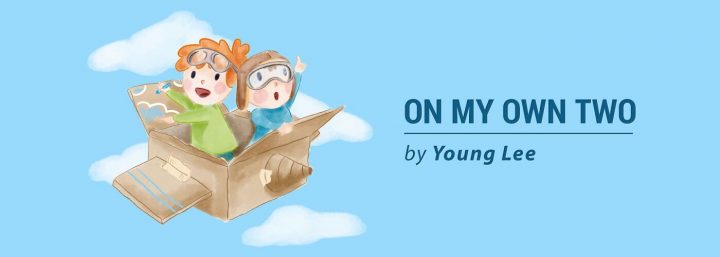A Walk in the Park for CMT Brings Us a Step Closer to a Cure
Written by |

Column by Young Lee
“If they’re really thinking about their audience, and if they provide water bottles, they’ll also have hand grips there,” my father said, as he drove my sister and I along familiar roads on our way to Whetstone Park — an old, beautiful community park near Ohio State University, and the location of the Columbus Walk 4 CMT.
It was July 27, and I had flown into Columbus, Ohio, two days earlier to see my family and participate in my first Walk 4 CMT event. I had been prepared to be the sole representative of the “Lee clan” at the event for Charcot-Marie-Tooth (CMT), but to my surprise, my father and sister agreed to participate as well. I’m proud that the three of us got involved in what turned out to be a special experience. And I learned a lot.
For example, the depth of our shared experiences as CMTers is something that continues to amaze and comfort me. I have written about my excitement to find that the need to buy shoes not merely for the length but the width is common among CMTers — and not just my family members. At this event, my father and I found that he was not the only one who often finds it easier to crush a plastic water bottle than to twist open a bottle cap.
It was clear that the walk’s organizers considered participants’ needs when planning the event — they did indeed “think about their audience.” There was ample hydration — and coffee — but no pesky bottle caps.
I spoke with the leader of the Columbus CMT Association branch, Jessica Diamond, who said paper cups and 5-gallon Igloo water jugs made more sense for the event because many of us lack fine motor skills — and they’re also environmentally friendly.
“A lot of thought went into making sure this event was friendly for those with CMT,” she said. The efforts included a watermelon carved to look like a shark with wide-open jaws, courtesy of Jessica’s father and his fruit-carving skills.
One thing that stood out to me at the event was the thought put into ensuring everyone present felt included and how that philosophy carried over to the format of the walk itself.
I had participated in other charity walks and 5Ks, but this was the first one where all the participants walked together as one group. I had planned to run the entire thing, and at first, I didn’t know what to think of the group concept.
However, with each step of the short half-mile walk, I appreciated the thought behind the decision.
While most other charity walks have the atmosphere of a competition or race, walking together contributed to a vibe of inclusivity and camaraderie. I think that was a nice change to the standard format.
Jessica said she felt the same way. Though each branch is free to run events as it wishes, she decided to change the pace to be more inclusive.
“I knew with [the Walk 4 CMT event], that it was going to be a pretty small group. And I wanted us all to be together and just kind of walk and share the moment together,” she said. “It was a nice little walk in the park with all your friends who all happen to have CMT. I want everyone to be able to participate. I know a lot of people get worried about it, so when I [was organizing the event] I made sure the walk was all handicap accessible with flat surfaces and that it was not very long so we could all do it and walk together.”
The Columbus Walk 4 CMT attracted more than 50 participants and raised more than $3,600 for CMT research.
This fundraising achievement reminded me of my interviews with Bernadette Scarduzio, a social media coordinator for the Hereditary Neuropathy Foundation, as well as my conversation with Jonah Berger, a member of the CMTA advisory board and director of Camp Footprint.
According to many leaders in the CMT community, we may be on the cusp of a breakthrough in the pursuit of a cure. Jonah once told me about the first time he met Dr. Michael Shy, a leading CMT doctor. He asked him, “Are you going to cure this disease?” Shy replied, “It will happen in your lifetime.”
In a recent interview, Bernadette told me, “People are finally starting to talk about it. It’s not just about people knowing about it, but about people knowing someone who has it. We can cure CMT. We just need millions and millions of dollars.”
Seeing all of the people gathered that Saturday morning surrounded by orange and blue balloons reminded me of what we are fighting. As a person with CMT, apart from the CMT community, it’s easy to view fundraising for CMT research as self-serving. However, our efforts are not merely for us as individuals; we do it for our friends, families, loved ones, caretakers, and future generations.
***
Note: Charcot-Marie-Tooth News is strictly a news and information website about the disease. It does not provide medical advice, diagnosis, or treatment. This content is not intended to be a substitute for professional medical advice, diagnosis, or treatment. Always seek the advice of your physician or other qualified health provider with any questions you may have regarding a medical condition. Never disregard professional medical advice or delay in seeking it because of something you have read on this website. The opinions expressed in this column are not those of Charcot-Marie-Tooth News or its parent company, Bionews Services, and are intended to spark discussion about issues pertaining to Charcot-Marie-Tooth.






Leave a comment
Fill in the required fields to post. Your email address will not be published.